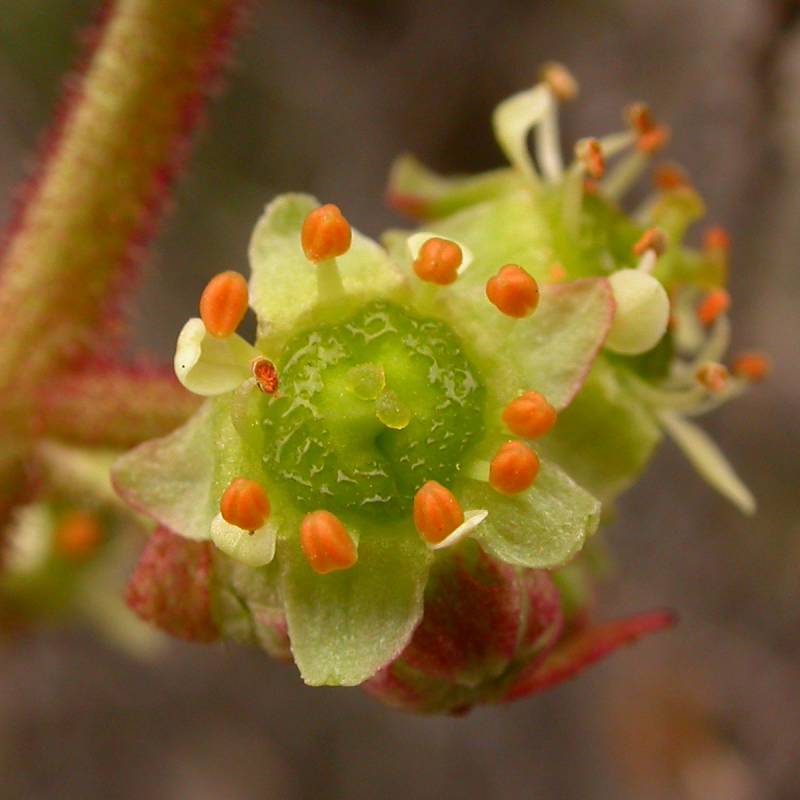Micranthes oregana
Micranthes nidifica
bog saxifrage, Oregon saxifrage
Columbia saxifrage, swamp saxifrage
Leaves basal, 10-20 cm. long, contracted to a broadly-winged petiole, the blades elliptic-oblanceolate to ovate-lanceolate, entire or shallowly toothed, nearly glabrous, but with soft hairs on the petiole margins.
Inflorescence an elongate panicle, narrow to somewhat diffuse;
calyx 2-3.5 mm. long, the 5 reflexed lobes oblong lanceolate;
petals white to greenish-white, usually 5 but sometimes 1 or more lacking, often unequal in size, obovate to ovate-oblong, 2-4 mm. long and 1-2.5 broad;
stamens 10, filaments broadly club-shaped, 1-2 mm. long, greenish-white to pinkish.
Ovary nearly superior in fruit;
carpels 2-4.
Micranthes oregana
Micranthes nidifica
- Local floras:
CA,
OR,
WA
- Local Web sites:
CalFlora,
CalPhotos,
Flora NW,
PNW Herbaria
WildflowerSearch
iNaturalist (observations)
USDA Plants Database
- LBJ Wildflower Center
- SEINet
- Plants of the World Online
- Encyclopedia of Life
- Wikipedia
- Google Image Search
- Local floras:
BC,
CA,
OR,
WA
- Local Web sites:
CalFlora,
CalPhotos,
Flora NW,
PNW Herbaria
WildflowerSearch
iNaturalist (observations)
USDA Plants Database
- LBJ Wildflower Center
- SEINet
- Plants of the World Online
- Encyclopedia of Life
- Wikipedia
- Google Image Search



